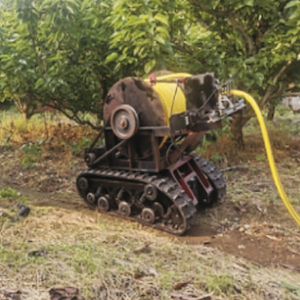Design and experiments of an automatic pipe winding machine

HTML: 118
All claims expressed in this article are solely those of the authors and do not necessarily represent those of their affiliated organizations, or those of the publisher, the editors and the reviewers. Any product that may be evaluated in this article or claim that may be made by its manufacturer is not guaranteed or endorsed by the publisher.
Authors
To solve the time-consuming and laborious problem of manual winding and unwinding water pipes by field workers during irrigation or pesticide spraying in agricultural production, an automatic pipe winding machine for winding and unwinding water pipes was designed. The guiding mechanism, pipe winding mechanism, and pipe arrangement mechanism of the pipe winding machine are designed, and the automatic deviation correction control method of pipe arrangement based on PID and the constant tension control method of pipe winding and unwinding is put forward, and the control system of the automatic pipe winding machine is developed. By making a prototype of an automatic pipe winding machine, the effects of pipe winding and unwinding and the constant tension control of the automatic winding machine are tested and analyzed. The test results show that under the condition of 4.0 km/h speed, the maximum angle error of the automatic pipe winding machine is 3.32°, the average absolute error is 0.95°, and the water pipes are arranged neatly and tightly. The maximum relative error of the water pipe tension is 9.3%, and the maximum relative error under the 0~4.0 km/h velocity step variable condition is 16.3%. The speed of the pipe winding and unwinding can adapt to the change of the vehicle’s speed automatically, and the tension of the pipe is within a reasonable range. The performance of the pipe arrangement and pipe coiling of the automatic pipe winding machine can meet the operating requirements.
How to Cite

This work is licensed under a Creative Commons Attribution-NonCommercial 4.0 International License.
PAGEPress has chosen to apply the Creative Commons Attribution NonCommercial 4.0 International License (CC BY-NC 4.0) to all manuscripts to be published.

 https://doi.org/10.4081/jae.2023.1429
https://doi.org/10.4081/jae.2023.1429






